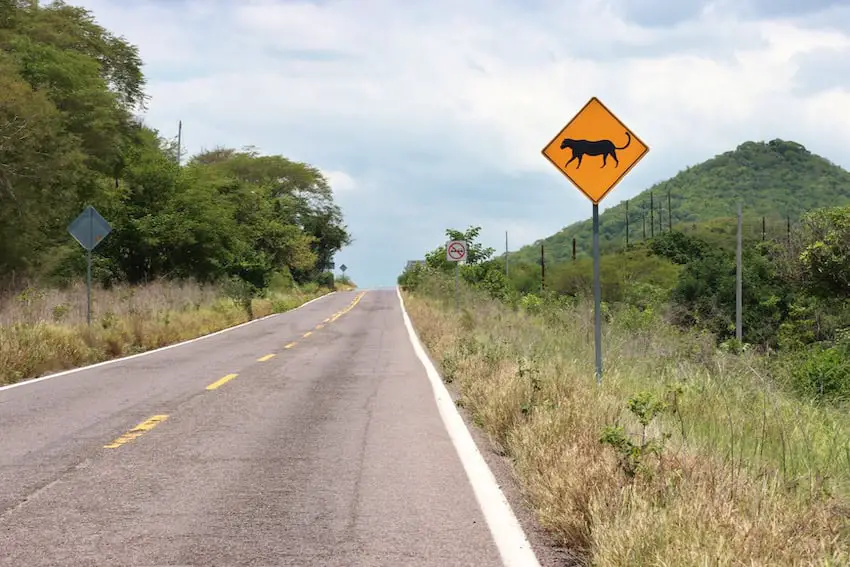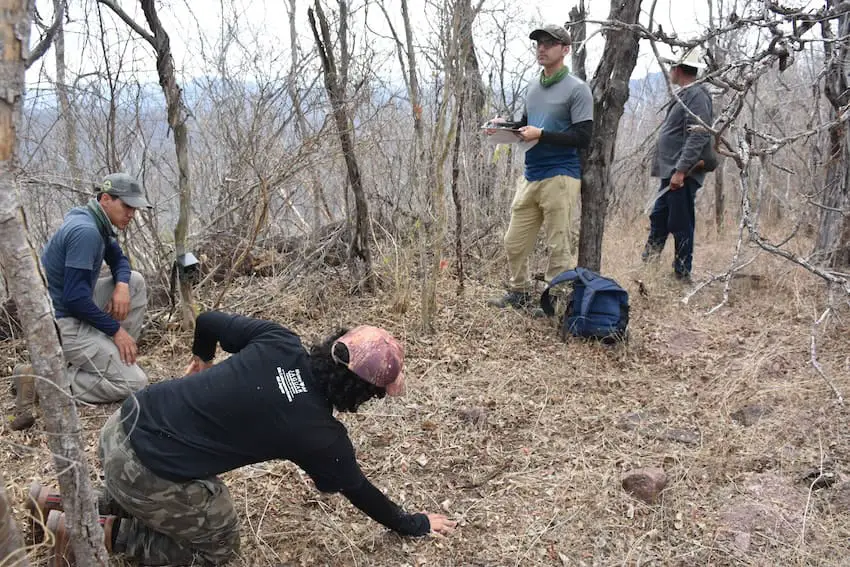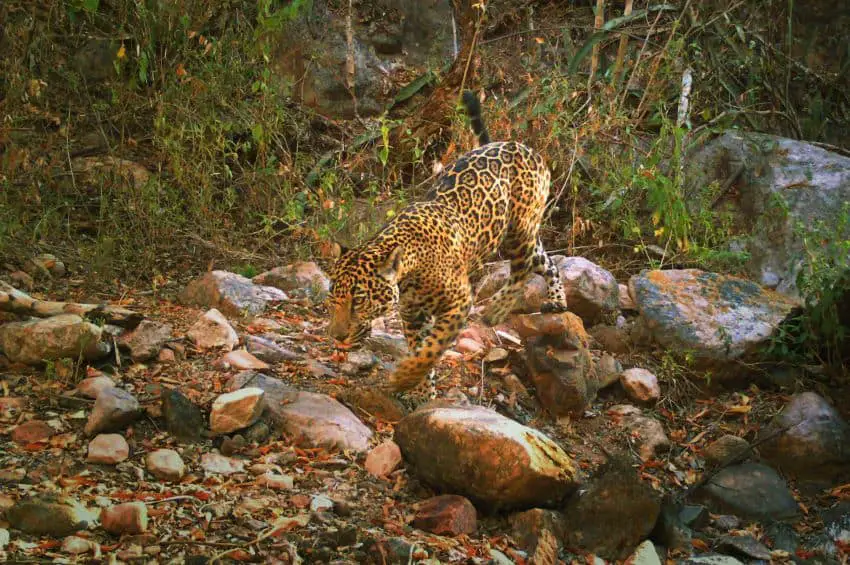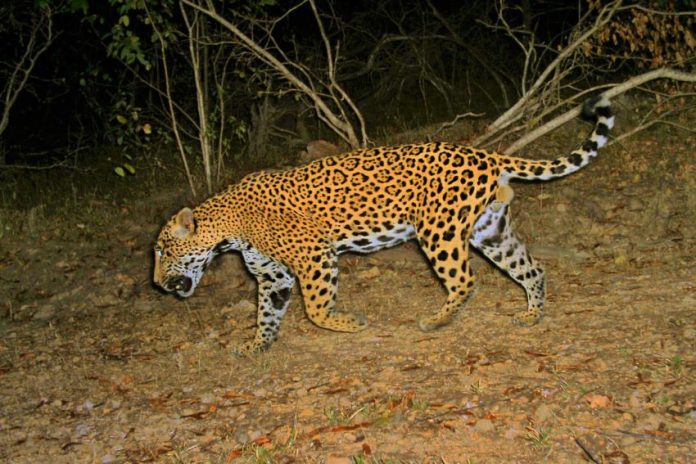At the foot of Sinaloa’s Sierra Madre Occidental range lies the municipality of San Ignacio. Much has changed since San Ignacio’s founding in 1633. But one thing remains the same: despite years of being hunted and feared, jaguars still roam the forests that surround the town.
The same can’t be said in many other places. Jaguars’ range once stretched from what is now the United States down to Argentina. Since the arrival of the Spanish, however, they have disappeared from more than half of the areas they once lived. Many remaining populations are on the brink of disappearing. The destruction of their home forests, loss of the prey that live in those forests, and killings by cattle ranchers are just a few of the threats jaguars face.

Despite the challenges, Mexico’s jaguars are a rare success story in the world of conservation, thanks in part to the work of researchers like Dr. Yamel Rubio Rocha. Rubio is a biologist at the Autonomous University of Sinaloa (UAS) and the force behind FUSCBIO, a conservation nonprofit.
Mexico is one of the few countries that actively monitors its jaguar populations. Rubio has been a part of the effort since the earliest days of Mexico’s first National Jaguar Census (Cenjaguar) in 2010.
Monitoring Mexico’s jaguars
The third jaguar census is currently wrapping up, with results expected in October. When I visited Rubio at Sinaloa’s Jaguar Biological Station in July, she and her team had just collected the camera traps they use to tally and study the big cats.

Yamel Rocha Rubio has seen signs of the animal’s presence and even heard its deep, hoarse roar nearby in the forest, though she’s never seen it with her own eyes in nature. That’s no surprise: jaguars are a “cryptic” species whose stealth and wariness of humans means that even people who live all their lives near the cats rarely see them.
Rubio, however, has seen hundreds of jaguars via the camera traps her team uses for the Cenjaguar count. This year in Sinaloa, the team worked from April to July. They braved sweltering heat to set up and later collect 40 camera traps from 30 stations, over a 200-square-kilometer area. On top of all that, they also monitor highways and roadkills to understand how traffic impacts jaguars and other large mammals.
Now that they’ve collected the camera traps, it’s time to analyze the thousands of photos and videos captured since April. By carefully comparing the rosette, or spot, patterns of the jaguars caught on camera, biologists can identify individuals. Tracking the movement patterns and reappearances of each jaguar allows them to estimate how many live in a given area.
“We’ve identified at least four different individuals in our San Ignacio research area [this year], but there’s more for us to do because we’re talking about examining hundreds and thousands of images,” Rubio said in late July.
Reason for hope

The team has even spotted a mother with two cubs, a promising sign for the local ecosystem.
“That also gives us a lot of hope because when you have territory with females and males, that’s fabulous,” Rubio said. “But when you have cubs, then we’re talking about a source site, about a site where there are conditions that allow individuals to reproduce.”
She hopes this year’s results will show that San Ignacio’s feline family is not an anomaly. Since Cenjaguar began in 2010, the population in Sinaloa has seen a small increase. Taking into account a margin of error, Rubio says that “at least at the moment, I can tell that the population is holding on.”
Dr. Gerardo Ceballos also expressed hope that this year’s census will show population increases. Ceballos is a national leader of the Cenjaguar project alongside “Mexican Bat Man” Rodrigo Medellín. He told Mexico News Daily in March that jaguar populations at the national level increased between the first and second censuses.

“In the first census there were 4,000 jaguars,” Ceballos said. “In 2018, we had increased to 4,800 jaguars despite the enormous problems the country has.” Ceballos predicted that this year’s survey would find even more specimens.
Globally, jaguar populations are near-threatened and decreasing, according to the International Union for the Conservation of Nature (IUCN). But in Mexico, the trend seems to be moving in the opposite direction.
Local initiatives to protect jaguars
In San Ignacio, Rubio says the community’s commitment to conservation gives her hope.

Locals take part in reforestation projects and guide the scientists as they search the forest for likely jaguar hangouts. Two local women, Mónica Osuna and Rosa María Manjarrez, take care of the small but vibrant Jaguar Museum in the neighboring town of Cabazán. The museum is free, though donations to support its programming are welcome. Jaguar themes have also become a notable part of local patronal festivals, where the pre-Columbian dance of the jaguar is still sometimes performed.
Meanwhile, government programs reimburse ranchers for livestock lost to animal attacks, which are often blamed on jaguars. Rubio, however, says the station’s monitoring work points to other causes like feral dog packs and reimbursement fraud.
The biological station also hosts guests. It rents out rustic cabins in the forest near the station for nature lovers, students and academics who want to participate in and learn about the research. Rubio recommends visiting between November and March to avoid the hottest months of summer. Interested parties can reach out by email to her, FUSCBIO or the Jaguar Museum for more information.
The cabin rentals help raise money for the station’s research operations. They also help with another goal: spreading understanding of jaguars’ beauty and their cultural and ecological importance.
For the time being, Rubio and the biological station are focused on analyzing camera trap photos with the hope that come October, they will have good news to report.
Rose Egelhoff is a freelance writer based in Mazatlán, Sinaloa. Follow her work at RoseEgelhoff.com
